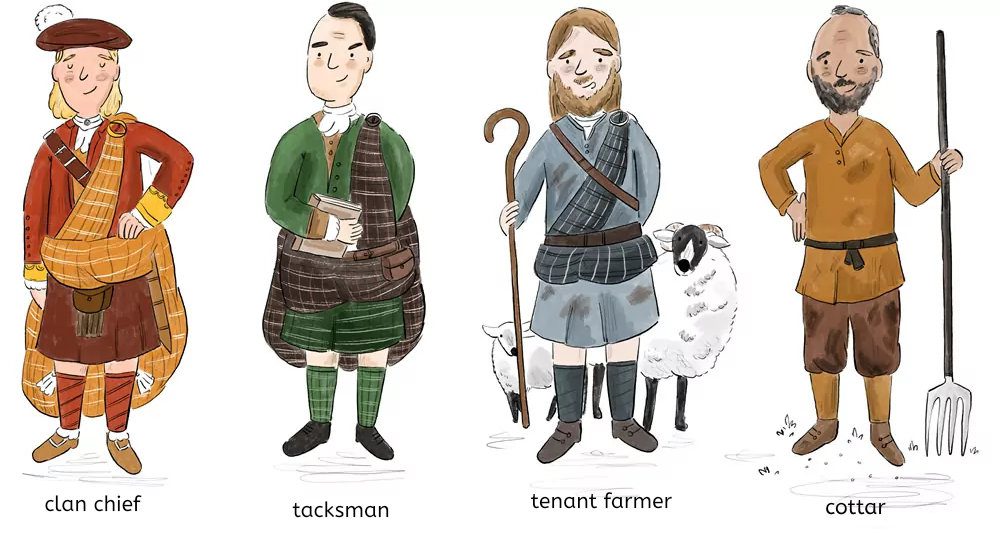Clans

The clan system
The clan chief had authority over the clan’s land.
He divided the land and rented parts of it to tacksmen, who were usually related to him.
The tacksmen were the ‘middle class’ of the clan.
They were responsible for managing the land and they called out the clansmen when they were needed to fight.
The tacksmen rented land to tenant farmers who gave work to cotters.
The cotters would plough, plant, herd the cattle and dig peat. In payment they were given a small piece of land in which they planted food for themselves.
After 1746 the social structure of the clans was broken
and it was then a relationship between landowner and renter.

Clans and kinship
Clans were named as the children of the chief.
For example, the Mackays – Clann MhicAoidh – the children of the son of Aoidh; the MacKinnons – Clann MhicFhionghain – the children of the son of Fionghan; the MacPhees – Clann ’Ic a’ Phì – the children of the son of Fie.
The clan chief looked on the members of the clan as ‘family’.
It was his responsibility to protect them, especially in times of hardship and famine. The clansmen were always obedient to the clan chief.
They were his private army.
Malcolm Canmore became King in 1058 after he killed MacBeth.
After that a clan system began to appear.
The clansmen had two lifestyles.
They were farmers for part of the year, planting seed and looking after cattle.
In summer they were soldiers, following the clan chief into battle.
Cattle stealing was part of their way of life.
Traditions, honour, loyalty and duty were strong in the clan.
Clans


